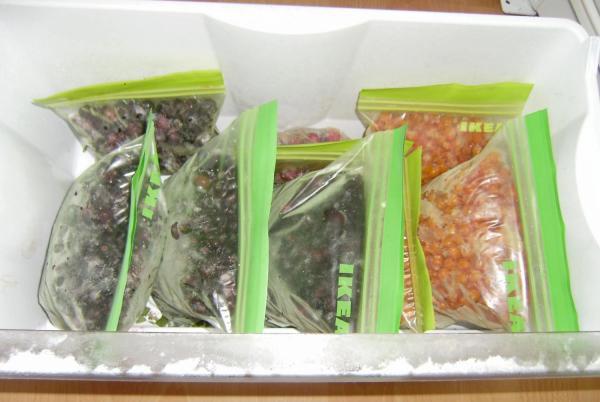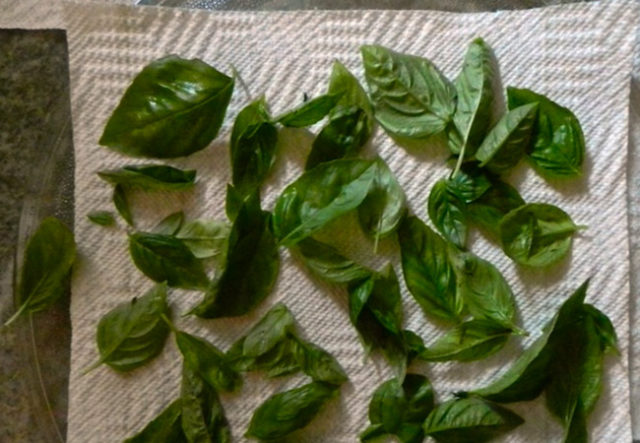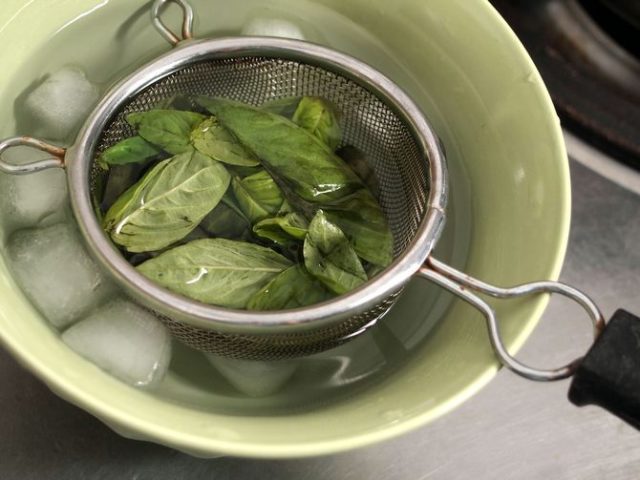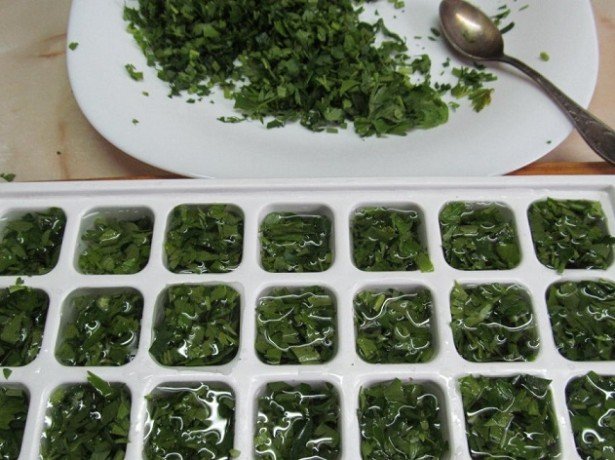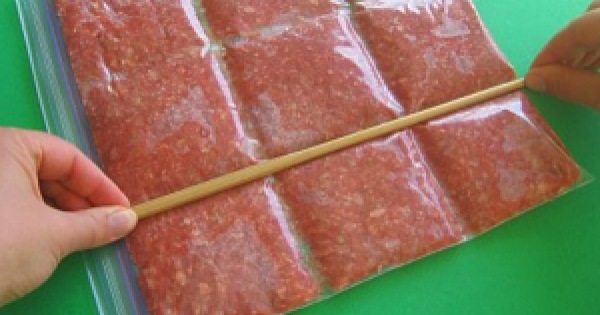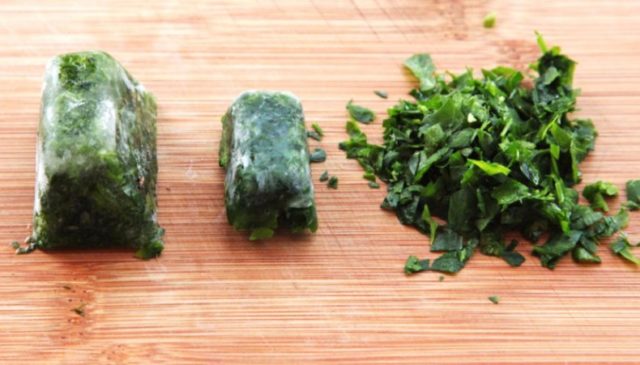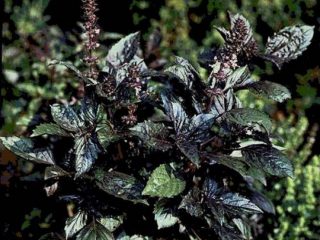Content
It is very easy to freeze fresh basil for the winter - this is one of the fastest ways to prepare herbs for long-term storage. At the same time, the plant fully retains both its taste and useful properties, and a pleasant rich aroma.
Is it possible to freeze basil for the winter
Basil can be bought at almost any grocery store, but the freshness of the plant is questionable. On an industrial scale, it is often temporarily thawed for various reasons, after which it is re-frozen. It is categorically impossible to do this - after repeated freezing, the greens lose all their useful properties.
In this regard, a natural question arises - is it possible to freeze basil for the winter on your own? The answer to this question is simple - yes, you can. At the same time, the quality frozen greens will always be under control.
Frozen basil is used to make sauces, soups, pastas and salads.
Rules for preparing basil for the winter for freezing
There are a number of general guidelines for freezing basil for the winter at home:
- Regardless of the method of freezing, it will be useful to pre-soak the basil leaves in water at room temperature for half an hour. At the same time, salt must be added to the water - if any small insects remain in the greenery, this measure will help get rid of them. After soaking, the greens are thoroughly washed in running water.
- The leaves of the plant must be rinsed even if they have not been soaked before.
- When frozen, the basil may darken, but this will not affect the aroma and taste of the plant in any way. This phenomenon can be avoided by blanching the leaves before freezing. To do this, they are immersed in boiling water for a few seconds.
- In order to prevent the leaves from becoming covered with dark spots after harvesting for the winter, instead of blanching, you can use another means, namely, storing greens in special bags for freezing. In this case, after placing the plant in the bag, it is important to release all the air from it. It is recommended to use ordinary drinking straws to facilitate this process.
- Before freezing, the washed basil is laid out on paper napkins or a towel until completely dry.
- Usually, only the leaves are frozen, separating them from the twigs.
- When adding frozen herbs to dishes, it is necessary to immediately remove the remaining material in the refrigerator to avoid premature defrosting. That is why it is recommended to lay out the leaves in the container in small portions.
- It is very convenient to lay out the basil for freezing for the winter in separate silicone molds or ice containers. The latter, as a rule, have a volume equal to 1 tbsp. l. This makes it much easier to determine the right amount of frozen greens during cooking.
Freezing basil for the winter at home
You can freeze basil for the winter either in the form of whole leaves or in a crushed state. Also, the plant retains its useful qualities well in the form of puree.
All types of basil are suitable for freezing. There are the following methods of harvesting this plant for the winter:
- fresh;
- freezing with preliminary blanching of leaves;
- pouring seasoning with broth, water or oil;
- in the form of mashed potatoes.
In general, all these methods are very similar, with the exception of some details. Regardless of the freezing scheme, the main thing is to adhere to the basic rules for harvesting greens for the winter in the process.
How to freeze basil leaves fresh
Fresh basil can be frozen as follows:
- The leaves are thoroughly rinsed in cold running water, and then laid out to dry on paper napkins, a baking sheet or a towel. In order to speed up this process, you can gently blot the leaves.
- The dried seasoning is laid out on parchment paper and moved for 30-40 minutes in the refrigerator, in the freezer. It is important to arrange the basil so that the leaves do not come into contact with each other, otherwise they may stick together.
- After this pre-freezing, the seasoning is quickly distributed into individual portioned sachets or containers. Here it is important to have time before the basil is thawed.
- Tightly sealed containers are returned to the freezer for winter storage.
How to freeze blanched basil in the freezer
One of the most popular ways to freeze greens involves pre-blanching. Plants are harvested according to the following plan:
- Washed basil is thoroughly chopped by hand or with a blender. It is important here not to cut the leaves too finely - in the end, you should not get gruel.
- The crushed leaves are placed in a colander or sieve, after which they are immersed in boiling water for 10 seconds. It is very important not to overexpose the basil - if you keep it in water for too long, it will cook.
- To cool the greens as quickly as possible, immediately after blanching, a sieve or colander is immersed in a container of cold water. For better cooling, you can fill the jar with ice cubes.
- Spread the chilled basil evenly over a plate, tray or baking sheet to dry.
- When the slices are dry, they are placed on the same surfaces in the refrigerator for primary freezing.
- The seized greens are quickly laid out in containers or bags, and then returned to the freezer.
After blanching and cooling, crushed basil can also be placed in ice containers and covered with water (preferably boiled). After ice has formed in the recesses, the cubes are removed from the mold and transferred to containers or plastic bags. Then they are put back in the freezer, in the greenery section.
These cubes can be added to dishes during cooking, even without defrosting them first.
Freeze basil for the winter in vegetable oil, broth or water
To freeze this seasoning for the winter, a variety of liquids are also used, with which crushed basil is poured. Whole leaves will not work in this case.
The cooking algorithm is as follows:
- The leaves are washed in running water and dried thoroughly.
- Dried herbs are cut with scissors or a knife, but you can use a blender in the same way. The slicing should be large - if you overexpose the leaves in a blender, you get puree.
- When cutting by hand, the leaves are first laid out in ice containers and only then poured with oil, broth or water.If you use a blender for chopping, you can pour the basil already in the bowl of the appliance. Recommended proportions of green mass and liquid: 1: 2.
- The filled ice cube trays are placed in the freezer. The oil, broth, or water should completely cover the seasoning.
Olive oil is most commonly used to freeze basil for the winter, but vegetable oils and butter can also be used. Before pouring the greens with butter, you must first melt them.
The ice containers can be replaced with airtight bags when freezing by pouring. To do this, put the greens in a bag, spreading it in a thin layer, and close it tightly. On a flat surface, deep grooves are pushed with a ruler, wire or wooden stick so that squares are formed.
After that, the bag is placed on the bottom of the freezer. When the green mass is frozen, you can break off the neat cooking plates from it.
Freezing basil puree
In a puree state, the seasoning is prepared as follows:
- The leaves are carefully cut from the stems - branches are not needed in this case. When growing basil at home, you can not pull out the whole plants, but only cut off the top 10-15 cm. The rest will soon recover.
- The greens are thoroughly washed in cold running water, after which you can place it for half an hour in a container with water at room temperature. This is done so that the leaves are saturated with moisture.
- After that, the basil is laid out on a towel, damp napkin, baking sheet or tray. You can gently dab the leaves with a towel to dry them faster.
- When the greens are dry, they are transferred to the blender bowl, filling the container one third or half full. It is not recommended to fill the container too tightly.
- Before starting the grinding procedure, lightly pour the seasoning with olive oil with the addition of a small amount of water. This is done so that the basil does not subsequently become covered with dark spots. Plus, olive oil will give your greens a richer flavor. Recommended oil dosage: 3-4 tbsp. l. one third or one half of the blender. If necessary, you can replace the oil with boiled water. The proportions remain the same.
- The leaves are crushed until a thick homogeneous gruel is formed.
- The resulting mixture is carefully poured into ice containers, after which the containers are removed to the freezer.
- If desired, after a day, you can take out the basil cubes that have set on ice from the molds and move them into a plastic bag for freezing herbs and vegetables or a container. After that, the puree is put back into the refrigerator.
The convenience of freezing pureed greens is that the green mass is frozen in portions. This makes the cooking process much more convenient.
Instead of using ice cube trays, you can spread the basil puree into small jars or containers. In this case, they must be lightly pressed and filled with several tablespoons of vegetable oil, without stirring - a layer of oil should evenly cover the surface of the puree. This is done in order to restrict the access of air to the greenery.
Then the jars or containers are hermetically closed and put into the refrigerator.
You can learn more about the procedure for freezing basil for the winter from the video below:
Terms and conditions of storage
You can store frozen basil in the refrigerator for up to 6-8 months. Subject to all storage rules, this period is increased to 1 year, but not more. Yes, it will still be edible, and even fully retain its taste and aroma, but annual basil will not benefit the body - by this time it will have lost about 90% of its nutrients.
For storage, basil is placed in the freezer in the compartment for vegetables and herbs.
Conclusion
Freezing fresh basil for the winter is not at all difficult - there are many ways to harvest this plant, so finding the most convenient method for yourself is not so difficult. It is impossible to single out any one as the best, since each of them has its own advantages and disadvantages. The most important thing is to follow the basic rules of freezing and storage of greensso that the spice retains its useful qualities as long as possible. In particular, in no case should basil leaves be thawed and then re-frozen. The rest of the storage of greens is not particularly difficult.

